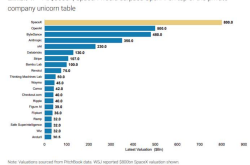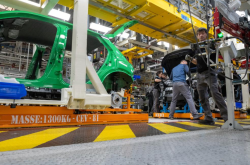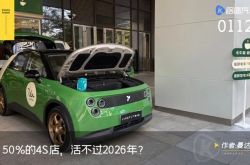"Manus" Retreats: Is the "Ebb Tide" of AI Agents Approaching?
![]() 07/22 2025
07/22 2025
![]() 574
574
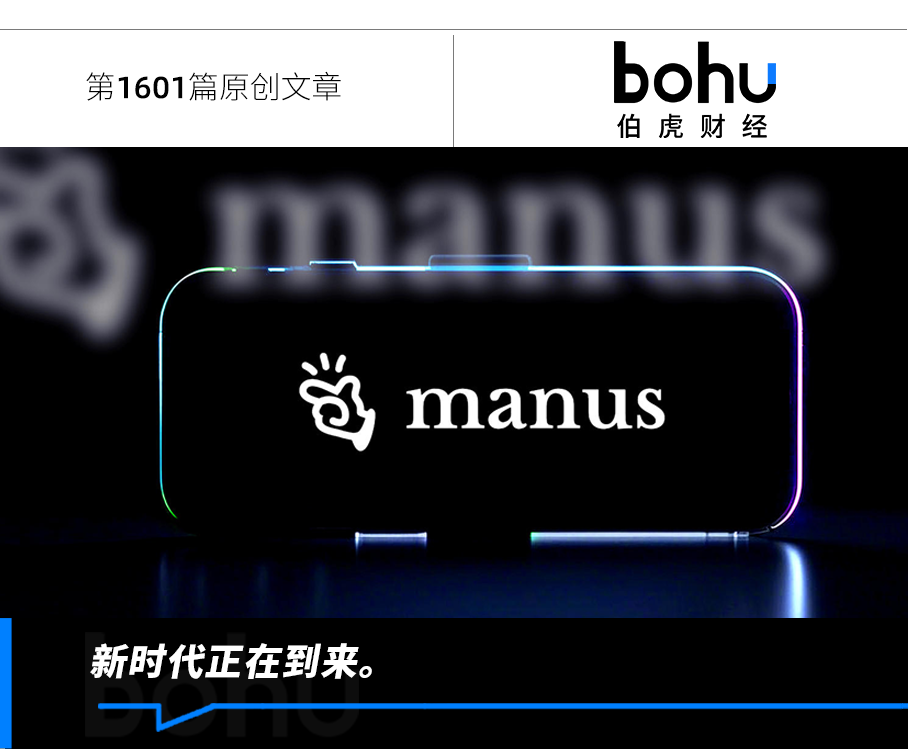
Source | BohuFN
In the past two years, the AI industry, spearheaded by large models, has iterated at an unprecedented pace. Yesterday's industry darlings under the spotlight may quietly exit the stage tomorrow.
Recently, the AI agent star company Manus abruptly cleared all content from its domestic social platforms. Media reports claimed that Manus would relocate its headquarters to Singapore, accompanied by layoffs in China.
In response, Manus officially stated to the media, "Based on operational efficiency considerations, we have decided to adjust some business teams. The company will continue to focus on core business development and enhance overall operational efficiency."
Despite Manus' downplayed response, its founder Xiao Hong expressed sentiments on social platforms about "untold hardships." He remarked, "Creating good products in a globalized market involves many troubles that stem not from the business or user value itself."
Manus' withdrawal from the Chinese market might involve trade-offs in computing resources, considerations for overseas financing, and data compliance requirements. However, Manus' struggle to gain traction in the domestic market is also a contributing factor to its reluctant shift.
Yet, this is not an isolated issue. As the AI market surges forward, few agents have been able to break through. Everyone touts agents as the future of AI large models, but when will they truly "blossom and bear fruit"?
01 Manus Fails to Grasp the "Trend"
In March this year, Manus gained overnight fame with a demonstration video. In multiple cases, Manus could independently complete complex tasks such as resume screening, stock analysis, and real estate research, prompting many viewers to exclaim, "AI is really here."
Founded by "computer genius" Xiao Hong, a graduate of Huazhong University of Science and Technology, Manus' Chinese founder team attracted many domestic fans. Invitation codes were once speculated to be sold for around 100,000 yuan.
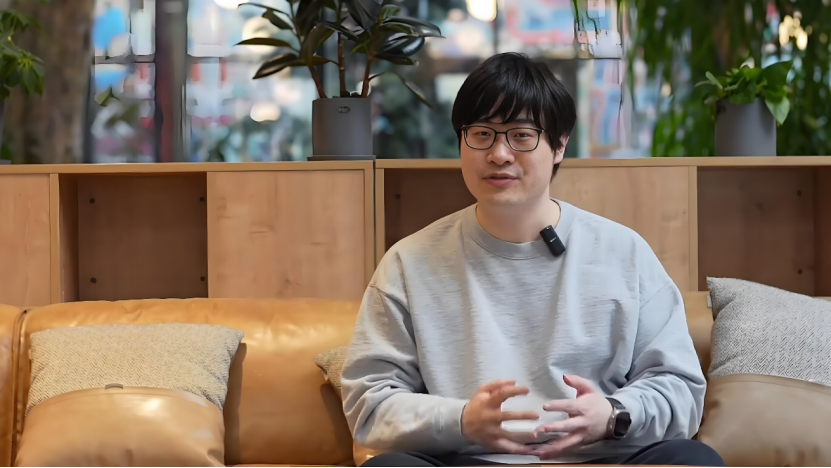
However, doubts quickly emerged. Most users hadn't officially tried Manus, but it had already been hyped up by the media as a "phenomenal product," making many viewers suspicious of "hunger marketing."
Moreover, Manus almost "debuted and became an overnight sensation," but most media reports came from domestic sources, with only a few mentions from foreign media, further fueling suspicions about Manus' true substance.
Subsequently, Zhang Tao, Manus AI's partner, publicly clarified. He said that Manus had never invested any marketing budget, and the "hard-to-get" invitation codes were due to limited server capacity.
In March this year, Manus announced a strategic partnership with Alibaba's Tongyi Qianwen team, marking Manus' last highlight moment. Outsiders speculated that with Alibaba's Tongyi Qianwen underlying model support, as well as traffic, ecosystem, and even financial backing, Manus' path to implementation should be smoother.
However, things didn't go as planned. In May this year, Manus announced the opening of overseas registrations, but users who once scrambled for Manus invitation codes seemed no longer interested. According to Similarweb data, Manus' monthly visits peaked in March this year, exceeding 23 million, but then gradually declined, with about 17 million visits in June.
Just two months have passed, so why did Manus lose its "halo"? On one hand, the AI large model industry thrives on speed. In the short time Manus paused, many AI products such as Deepseek, Tencent Yuanbao, and Alibaba Tongyi Qianwen accelerated their iterations and released new generations.
In addition, there's Manus' direct competitor, GenSpark, created by former Baidu executives Jing Kui and Zhu Kaihua. Recently, CTO Zhu Kaihua revealed that the company has released four super-agent products in the past two months, with a cumulative user base exceeding 5 million. Compared to Manus, GenSpark has surpassed it in user growth rate.
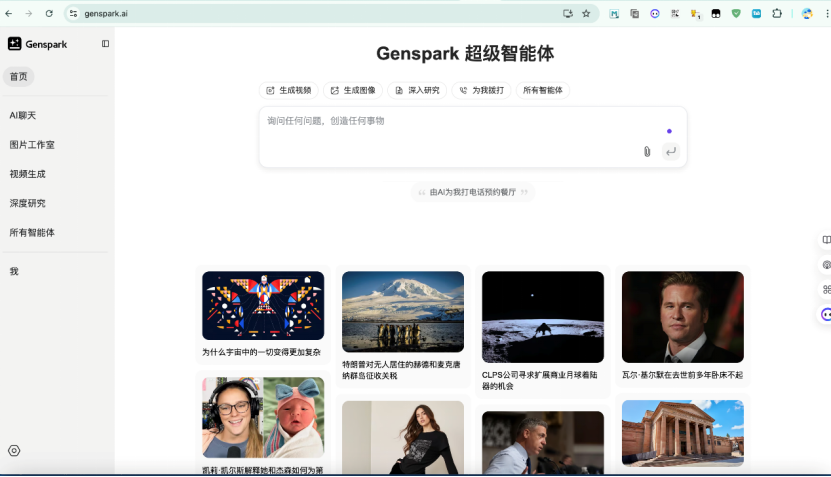
Large companies have advantages in technology, capital, and traffic. Once Manus missed the opportunity to make a splash, it became difficult to compete with giants for the remaining market dividends in the capital market.
On the other hand, users are more concerned about the product experience. Theoretically, Manus simply combines large models with multiple small models, disassembles various tasks, and completes them through an integrated toolkit.
Manus is like a "brain" that arranges the most suitable "tools" to complete tasks. Strictly speaking, it only "stitches" the advantages of mainstream large models and is not a groundbreaking innovation.
Manus' founder Xiao Hong has also stated that "the product is very simple and has no secrets." Therefore, the day after Manus was released, various open-source projects that replicated Manus' functions, such as OWL and OpenManus, quickly went online and could also perform tasks like web browsing, file operations, and coding.
Against this background, users waited for two months for Manus only to find that it had only opened an overseas version, and the version created in collaboration with Tongyi Qianwen had not yet debuted, disappointing many users waiting for the Chinese version.
In addition, the paid plans of $19, $39, and $199 were also criticized by users for being too expensive. For example, GenSpark, which came from behind, also offers three subscription tiers priced at $10, $25, and $50 per month, respectively.
In the GAIA benchmark test, Genspark achieved excellent results at multiple levels, outperforming Manus and OpenAI Deep Research. More importantly, Genspark also has a Chinese version.
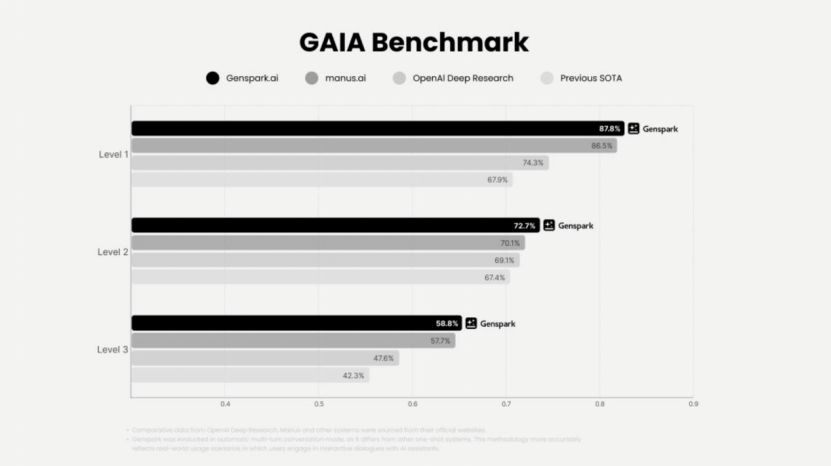
An industry insider pointed out that there are many similar products on the market now, and Manus' commercialization pace is not fast enough. It provides a small free quota after full launch, and the paid membership price is high, further increasing the decision-making cost for users.
Nowadays, the AI industry is already a "fight among gods." Most AI products have low user stickiness. If Manus cannot prove its strength, the first-mover advantage it has accumulated will quickly diminish. If users find better products, they can easily migrate.
02 Large Models "Eat Up" Agents
Behind Manus, there are more agents waiting to "take the throne." In the past two years, agents have started to "go viral." Grandview Research predicts that the global AI agent market size will reach $5.4 billion in 2024.
The agent frenzy lies in market hype. When a trend arrives, everyone wants to seize the opportunity. CB Insights data shows that agent startups completed a total of $3.8 billion in investment and financing in 2024, a three-fold increase year-on-year.
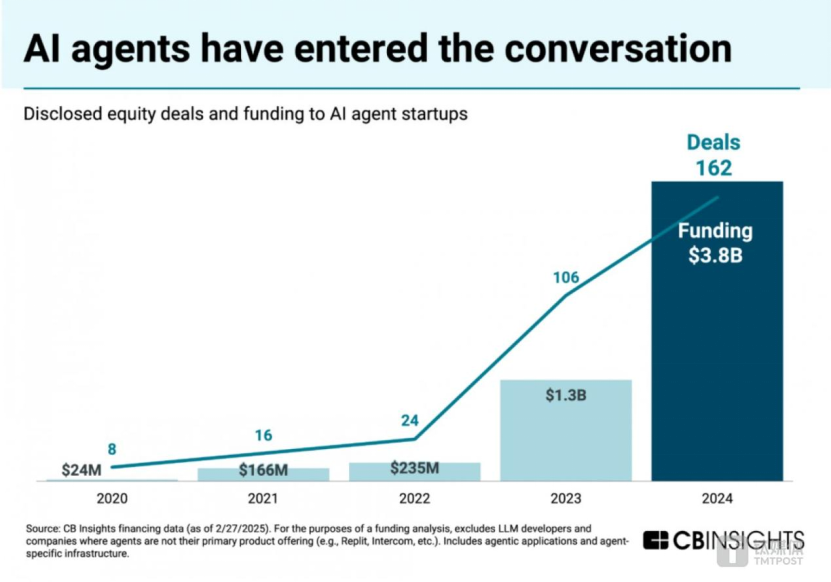
In addition, this trend is also driven by the joint efforts of large companies and other enterprises. After the "battle of a hundred models," large model enterprises realized that developing general large models is essentially a "money-burning competition," and only a handful of large companies can stand firm.
Therefore, it's more critical to seize application scenarios and promote rapid product implementation. In this context, agents, which have relatively low setup costs and can be quickly implemented in applications, are becoming increasingly popular, and agents have also become new traffic entry points.
A group of large companies have begun to accelerate the layout of the agent ecosystem and launch agent development platforms for enterprises and developers, such as Alibaba's AgentScope, ByteDance's Kouzi, and Baidu's Qianfan AppBuilder, targeting both consumers and businesses.
However, the frenzy in the agent market has also given rise to a "bubble." Analyst firm Gartner believes that the agent market will experience a wave of ebb tides after cooling down, and more than 40% of agent projects will be canceled by the end of 2027.
Therefore, Manus' withdrawal from the Chinese market is only the beginning of the reshuffle in the entire agent industry. For more agent startups/agent companies and developers, what they need to focus on is who will stay.
First, there's an overall surplus of agents. Agent development platforms have greatly reduced the entry barriers for agents, allowing developers to apply templates with one click to develop agents. However, most products may not have practical value; some corporate departments choose to find outsourcers to build agents to catch the AI trend, but most of these "task-driven" products are not worthy of the name and can only be considered data call tools.
Second, large models will "eat up" 90% of agents. Zhu Xiaohu, managing partner of GSR Ventures, recently mentioned this view on social platforms.
Deep thinking models are the foundation for building agents, but as task complexity increases, the difficulty for agents to coordinate different models across disciplines will become greater. In contrast, as the capabilities of large models grow, their internal coordination becomes easier.
Theoretically, large models can do everything; it's just a matter of whether they want to do it. Large models' advantages in technology, resources, and user needs will enable them to swallow up many tasks and functions originally handled by agents, and they can achieve this in a more efficient and cost-effective manner.
Recently, Musk released the Grok 4 large model, with the core innovation being "multi-agent internalization," that is, integrating agent capabilities into the training process, turning debates and self-checks between multiple agents into the endogenous capabilities of large models.
Before this, people mainly used agent tools like Manus to let large models handle complex tasks. But after the emergence of the multi-agent version Grok 4 Heavy, it can simultaneously start multiple agents to work and integrate the results.
This also brings out the concept of Agentic AI (agent-based artificial intelligence), where artificial intelligence is moving from the execution of single tasks to a new paradigm of multi-agent collaboration.

Early this morning, OpenAI also released its own Agent mode, introduced by Sam Altman and four OpenAI researchers. In the demonstration video, you can directly make requests to ChatGPT in Agent mode, and ChatGPT will open a virtual machine and operate step by step.
03 Are Agents Still the Future of Large Models?
Although agents are undergoing a new round of technological iteration, entering 2025, the number of global agents is still growing rapidly, with domestic large model enterprises releasing new agents basically every month.
In June, Baidu Intelligent Cloud launched "scenario agent" solutions covering multiple industries such as finance, electricity, and transportation; in May, Lenovo released Farsight AI agent lawyer assistants, Imagine Help service agents, and other agents for different sub-fields; in February, Fosun Pharma released the iPharmAID decision-making agent platform focusing on the pharmaceutical field.
The trend of agents returning to specific business levels is becoming increasingly apparent, and the turning point of the industry has quietly arrived. Next, agents like Manus, which focus on the "stitching" model, will face further "squeeze" from upstream and downstream in their living space.
Facing "upstream," large model manufacturers are continuously integrating agent capabilities into their own models and products, dealing a dimensionality reduction blow to general agents; facing "downstream," various AI applications and agents in vertical fields are also accelerating their emergence, and some enterprises will also develop their own agents. Vertical products often provide more precise and in-depth services than general agents.
Ultimately, the agents that can stay at the table will not be isolated individuals but will be able to deeply anchor themselves in specific business scenarios based on their core advantages and resource endowments, continuously creating perceptible value for users. They may be divided into several types of players:
One group is the "ecological players" represented by large companies. They have mature large model bases and can open up agent development tool chains and solutions on this basis while attracting more enterprises and developers to join.
What ecological players pursue is the right to distribute traffic and discourse power in the AI era. This business has the largest imagination space but is also the most difficult. It requires players to continuously invest huge resources while maintaining continuous iteration leadership in the technology base and accurately balancing innovation, commerce, and user needs.
Another group is "enterprise service players" that focus on vertical scenarios. They mainly rely on scenario penetration to gain a foothold, especially in professional fields such as healthcare, finance, and industry. Service providers must have a deep understanding of industry know-how and enterprise architecture to create agents that can truly be delivered to specific scenarios.
The last group is "hardware players" represented by intelligent terminal manufacturers such as Huawei and Xiaomi. They deeply integrate agents into their products and have advantages in user demand collection and product experience refinement due to their hardware scale advantages. "Human-computer interaction" can also better leverage the scheduling capabilities of agents.
Mark Zuckerberg once predicted that the number of agents in the future may exceed that of humans. But how to reach this sci-fi-like future still requires continuous exploration by the industry. When we are in a future full of agents, perhaps agents can be considered truly mature.
From this viewpoint, we needn't be overly pessimistic about Manus' shift in direction and its business reboot. For any product or ecosystem to establish a strong foothold in the market in an unprecedented manner, adjustments are a given. It's nearly impossible to predict who will ultimately triumph until the very end.
The cover image and illustrations in this article are subject to the copyright of their respective owners. Should the copyright holder deem their work unsuitable for public viewing or feel it should not be used without charge, kindly contact us promptly. This platform will take immediate corrective action.

